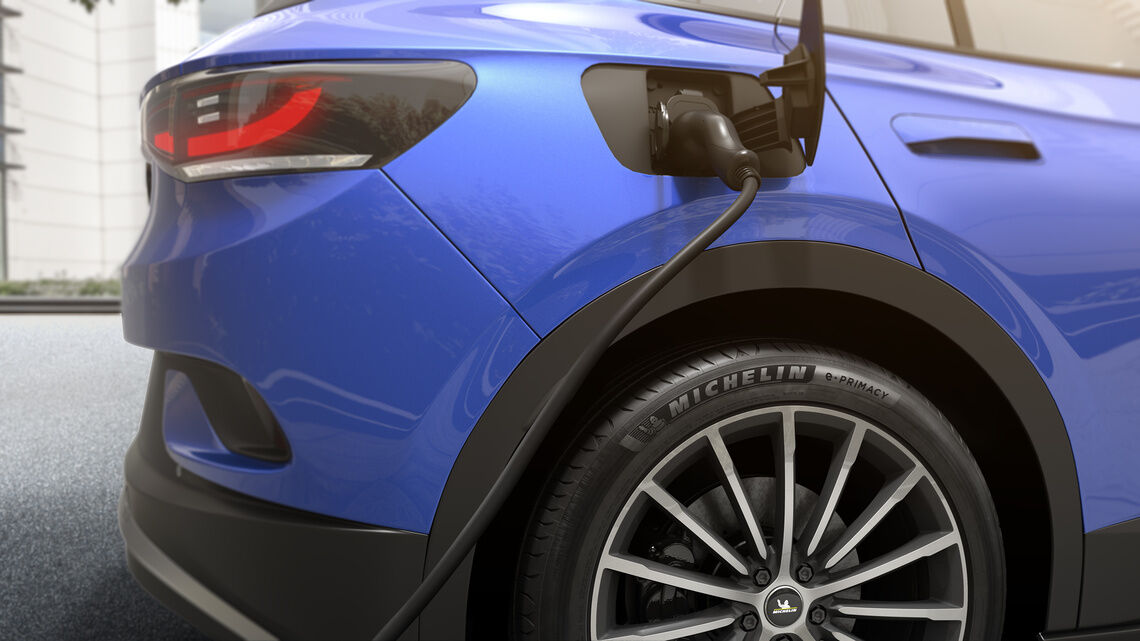What is a high load capacity tyre?
Over the last decade, the present – and future – of car technology has changed dramatically, largely due to the introduction of hybrid and electric vehicles. Their often-limited range requires all drivers to insure themselves that charging stations are on their way. These regular stops to recharge can add a significant amount of time onto your journey. The solution to this is a larger and heavier battery which can hold more charge, allowing you to enjoy a much longer range before needing to charge. But installing larger batteries means an inevitable increase in the overall weight of the car.

Since the load of the car is supported by the four tyres, we then need to either increase the size of the tyres or use tyres which can safety handle more weight. However, the design of the vehicles (especially sport vehicles) often means they don’t have space to add in bigger tyres, and the existing Extra Load (XL or EL) tyres on the market aren’t sufficiently able to support the heavier load, despite being stronger and more hardwearing than standard tyres. Because of this, the tyre manufacturers association, ETRTO (European Tyre and Rim Technical Organisation) has defined a new tyre standard that can carry more load than the existing XL tyres. These are now known as the High Load capacity (HL) standard tyres.
HL tyres for which types of vehicle?
High Load Capacity tyres are tyres which are designed to support heavier vehicles, such as electric vehicles, hybrid cars and SUVs. HL tyres, which despite being the same size and inflated to the same pressure, offer the higher load capacity needed by hybrid and electric vehicles with larger batteries.
Calculating how far your car can go on a full tank isn’t as simple as it might seem. Two vehicles can start with the same amount of fuel and drive the same distance, but their fuel consumption upon arrival may be significantly different due to numerous factors. This is quantified in miles per gallon (mpg), which equates to approximately 4.55 litres of fuel. The higher the mpg number, the more efficient a vehicle is.
Not only does a car start off with an mpg rating, the distance your vehicle can travel varies depending on other factors such as driving style, tyres and terrain. This is why we often use the phrase “fuel economy” in terms of how the engine’s use of its fuel can be optimised.
How can you recognise HL tyres?
HL tyres are easy to recognise, with a prefix stating ‘HL’ on the sidewall ahead of the size details.

Why is Michelin developing HL tyres?
The need for adaptive technology and new tyre designs is most clearly seen with the growth and widespread adoption of hybrid and electric vehicles. It’s important that consumers are able to buy tyres that are designed for the specific needs of these vehicles – this usually includes a higher weight load because of the batteries, as well as to assure regenerative braking, lower rolling resistance while still making sure that noise is reduced as much as possible for a quieter journey.
Last but not least, Michelin developed these reglementary tyres to conform to the road safety rules and guarantee all cars that need them to be able to fit them to their car.
How does Michelin technology support HL tyres?
The technology used to create these tyres is advanced, and at the cutting-edge of developments in modern tyres. It involves using Michelin expertise to increase carcass load carrying capacity while maintaining rolling resistance and comfort through a combination of compounding, mold profile and reinforcement type. This means adapting the rigidity of the tread compound in order to support more load while maintaining wear performance and handling, as well as reinforcing the tyre carcass in the zone of max strengths by using more robust plies and harder compounds. Finally, the profile is optimised and adapted to absorb the additional flexion of the tyre, due to the weight increase, without sacrificing the comfort for the driver and passengers.
Do I need an HL tyre on my EV vehicle?
It depends. When faced with a car with an increased weight, or higher load capacity, there are two options. These are:
- Upsizing the tyre size, when possible
- Or alternatively, using the same sized tyre, but one with has a higher load (HL) carrying capacity
But please keep in mind that if you’re driving a large, powerful electric or hybrid car, you’re likely to need HL tyres. Remember that vehicles using HL tyres will need to replace them with new HL tyres when required.
The European Union introduced its first tyre labelling initiative in 2012. It gives some hints on the opportunities tyres offer when it comes to car fuel saving tips.
[LIEN 3]The current tyre label[/LIEN3] (updated in May 2021) adheres to the European Union’s latest Energy Labelling initiative, and displays a scale of A to E for [LIEN 1]rolling resistance[/LIEN1] (identified by a gas pump), where A is the highest and E the lowest in terms of performance. Choosing A class “fuel efficient tyres”can significantly reduce your car’s fuel consumption.


